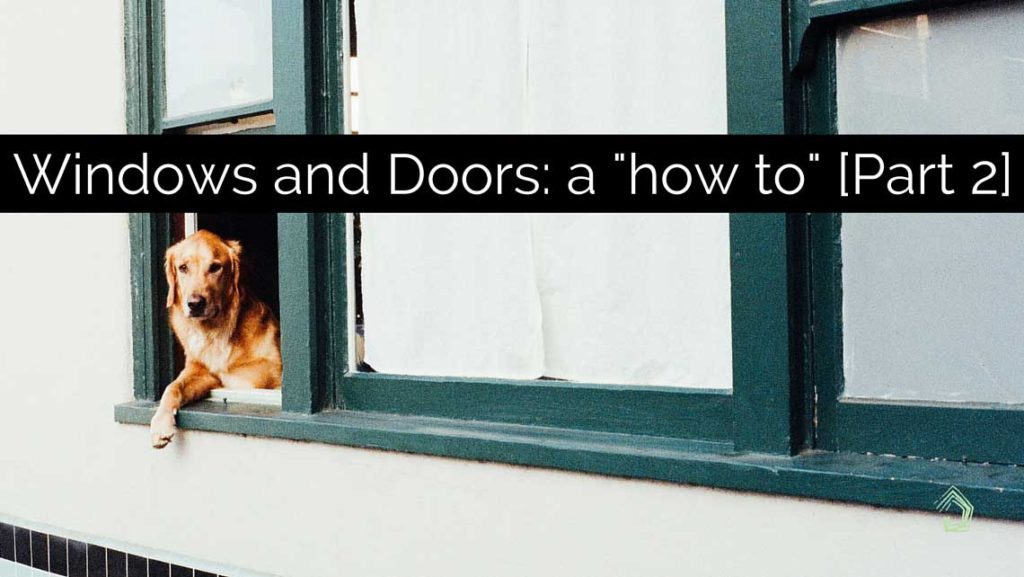
In the last blog (7 questions to ask before choosing the best windows and doors for your home) I took you through the ways I determine how to position windows and doors, and decide what they need to do.
This blog [Part 2!] is intended as a next step – a helpful guide to choosing the best and most suitable glass window or door for each situation in your home. In this blog, I’ll be sharing various things to consider in choosing the glass window / door itself. Glass windows and doors are also called “glazing” or “fenestration”. This blog’s a long one, and by no means exhaustive. However, I’ve tried to cover most bases you need to be aware of, or may have questions about … so here goes!
Glazing frame types
Glass windows and doors can be framed in timber, aluminium or steel. And believe it or not, you can get a hybrid timber and aluminium frame also – where it’s timber on the inside, and aluminium on the outside.
Timber framing
Timber windows are generally higher maintenance, as they require refinishing over their lifetime in your home. They can create a beautiful natural warmth to your home, and if your aesthetic preference is for a more traditional style, you may prefer this choice. There are companies that do stunning large, expansive and contemporary timber framed glazing also – so don’t think it’s limited to traditional homes. These large sliding doors and windows can have very simple, seamless thresholds and sliding tracks as they can be top-hung and work gorgeously to create that indoor-outdoor connection we desire.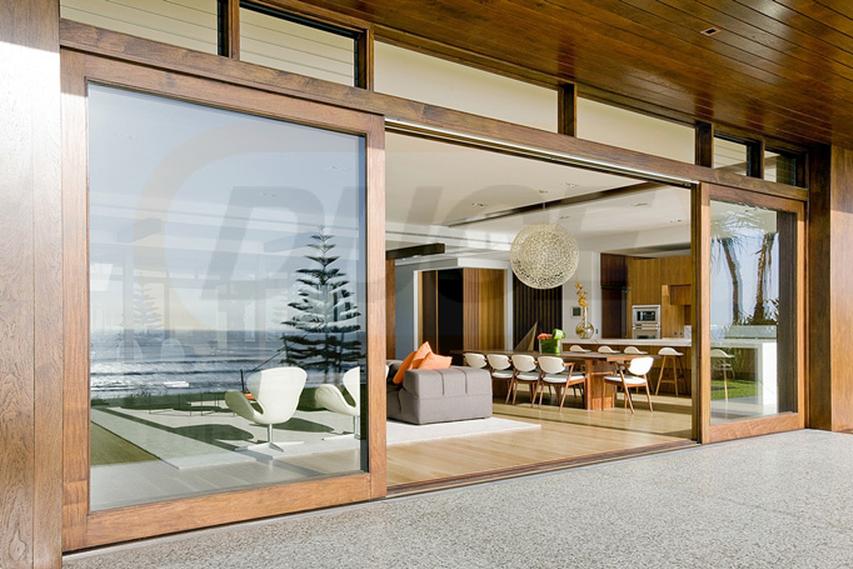
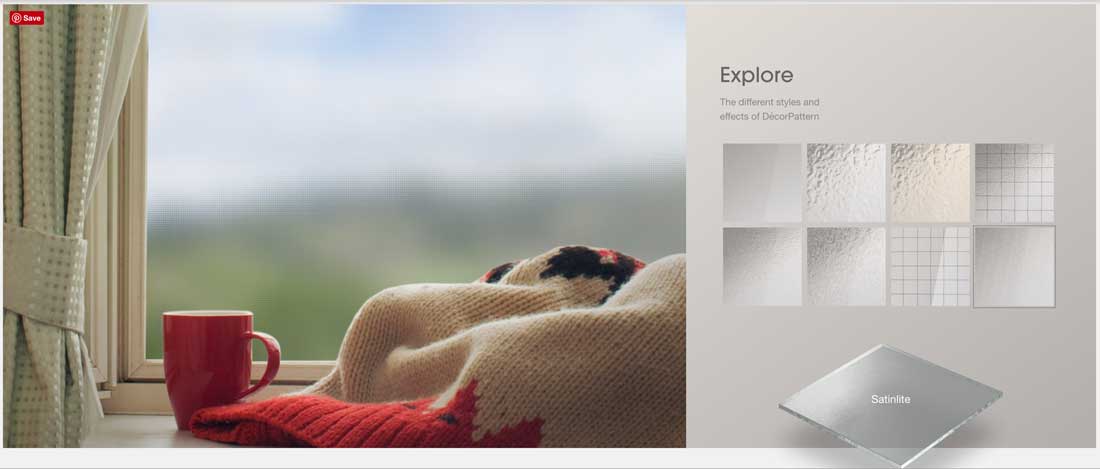
Timber framed windows [Image Source: Duce]
Aluminium framing
Aluminium framed glazing is used extensively through building domestically and commercially. Based on your budget, your aesthetic preferences, and the size of your openings, you can choose standard residential framing, commercial aluminium framed glazing, or a level in between. You can choose a powdercoated finish, or anodised. Each manufacturer will have a standard range, or you pay a premium to choose from an extended range.
Standard residential glazing will generally be the most economical of all frame types. Its maximum overall height is 2,400mm. Taller heights, and really large areas of glazing can be done in semi-commercial, or commercial grade aluminium framed windows.
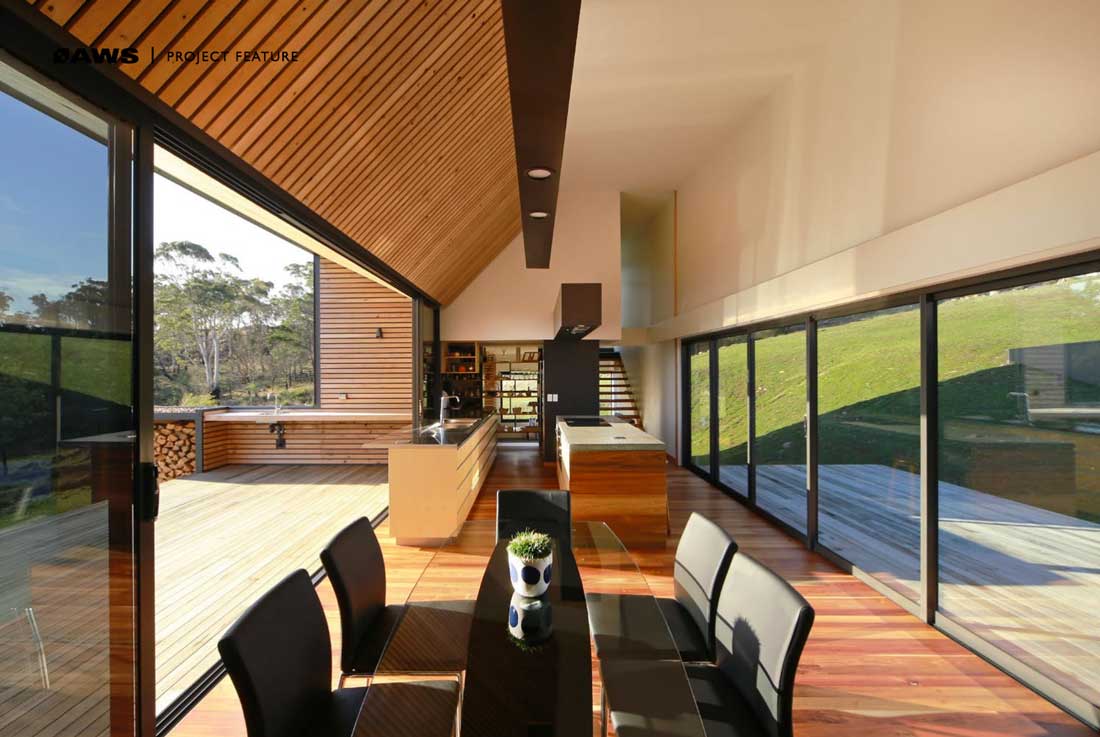
Aluminium framed sliding doors [Image Source]
Steel framing
Steel framed glazing is fantastic for that industrial aesthetic. Thinner in profile than timber or aluminium, it’s also more expensive, but such a stunning choice for a dramatic impact on the style of your home.
Steel framed windows create a very fine and delicate appearance in a wall of glazing [Image Source]
Special note
Please never choose a material that’s made to look like another. You can buy timber grained aluminium framed windows – they’re even powdercoated in a ‘timber-look’ powdercoat. Materials should look like they are. Honesty in design is always the better choice.
Window opening types – or types of operable windows
There are so many different window and door opening types. I’m going to run through some of them here, and some specific things to consider. This is not an exhaustive list, but goes through the main types. Generally for each type too, you should also think about screening, security, cost and impact on the space (so keep reading for those sections).
Fixed glass
Like it sounds – glass that doesn’t open. Sometimes you only want the view, and not necessarily ventilation as well. Don’t think every bit of glass you put in your home has to be operable. Fixed glazing generally has a finer frame, and can be great where view, but not ventilation, is the priority.
Sliding
In aluminium frames, sliding windows and doors are the least expensive of all operable window types. They’re easy to screen as they move within the frame. Aluminium sliding windows and doors generally have the track for screens already built in as a standard.
Awning
Awning windows push out from the base, either using a winder system, or ‘friction stays’ (levers you unlatch to then push the window out). Of course, winders have a chain attached to them, so the amount the window can open will be restricted. To screen these, you’ll need to add screening on the inside – and if a winder operation, there’ll be a little adjustable part of the screen to open (and open the window) and then close the screen back up.
I like awning windows because they can be fairly weather proof when open (when you have light rain and not much wind) because pushing the window out creates a hood to the window opening.
Casement
These windows are hinged on the side and open outwards. They’re brilliant for capturing breezes – as you can angle them to literally channel a breeze inside. You can use them as solid or obscured panels too to control views and privacy. Screening needs to go on the inside.
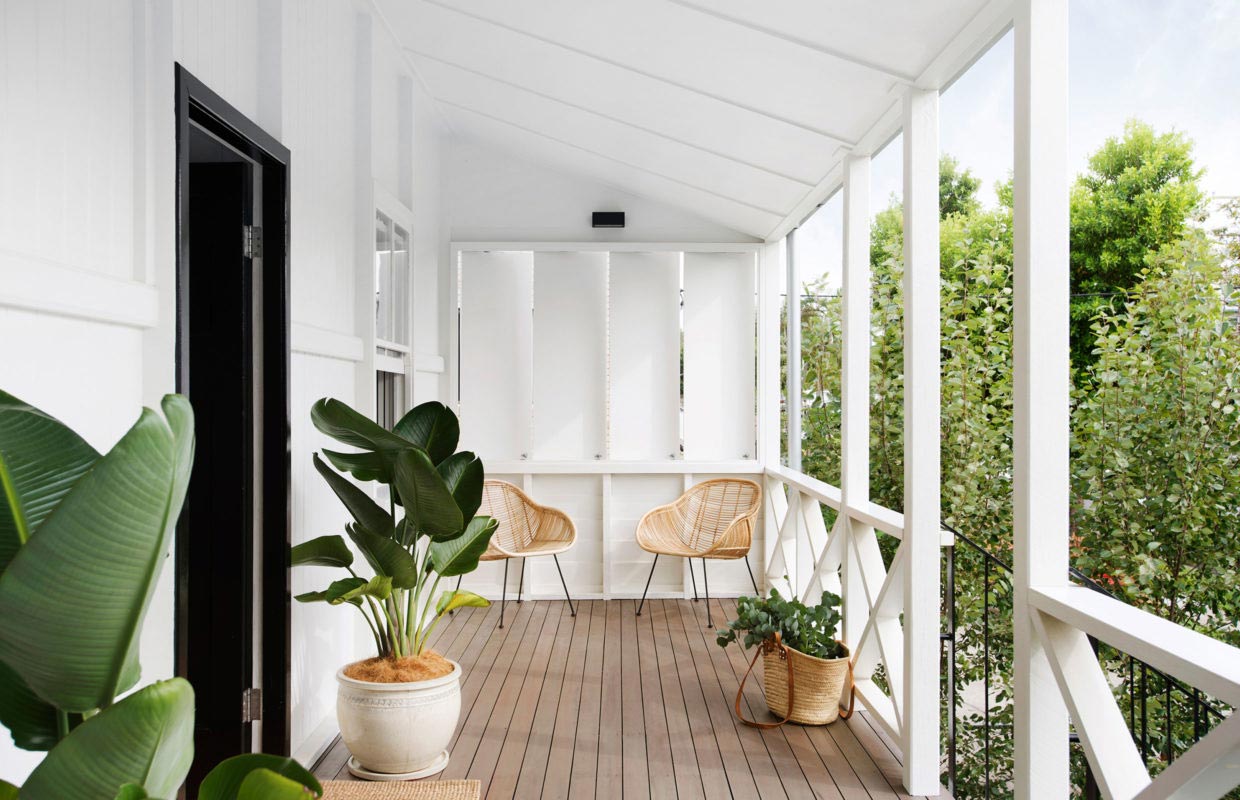
I’ve always loved this use of casement style openings – this time on something solid – a s0lid screen that controls views and breezes on the side of this verandah. From the gorgeous Durham House (where you can now stay), designed by Vokes and Peters [Image Source]
Louvre
As we start to move into louvred windows, we’re moving into more expensive window territory.
Louvred windows, like casements, are fantastic for ventilation. Blades can be specified in clear, tinted or obscure glass, and you can also use timber or aluminium blades. Because of the angling of the blades, you can select an obscure or solid blade material, and manage privacy.
Blades come in two sizes – 152mm and 102mm. The maximum width you can have a louvred window (at 152mm blades) is 900mm, and 750mm in 102mm blades.
Often these windows are chosen because you can create view, ventilation and have them full height – and they’ll provide a balustrade of sorts. However, remember there are various codes that apply to balustrades – impact and opening size – that the window will still need to satisfy.
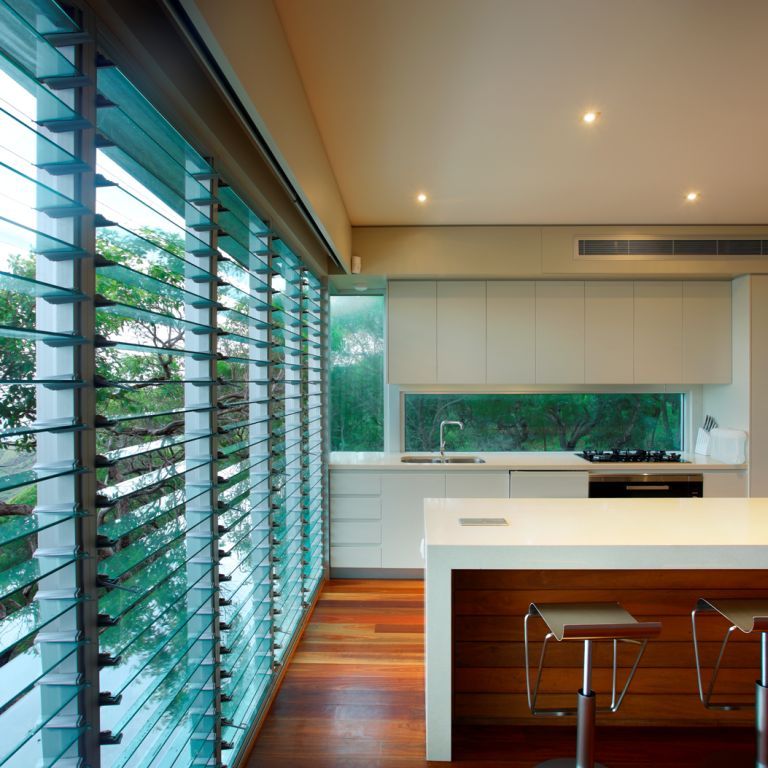
A bank of louvred windows here creates a beautiful breezy outlook for this space [Image Source]
Bifold
Bifolding windows and doors are doors that concertina back within a top and bottom frame. They’re often sought after as the ultimate in opening up to the outside – as a wall of glass will literally fold out of the way.
Homeowners often tell me this is their ultimates, and the choice they want especially for opening living areas to outdoor entertaining areas.
I disagree. Whilst they can be great, they can also be challenging to live with. The very nature of the way they operate, means that they need clearance to open and close – so they can chew up floor space you may need for furniture.
They’re also great when they’re full open – fantastic actually – but that’s it. When they’re open, they’re OPEN. And when they’re closed, they’re closed. There’s not a lot of ‘in between’ when it comes to bifolds. Consequently, I recommend you specify that one panel opens freely of the rest of them – so you can open and close it independently for easy access in and out. I’d also recommend putting drop bolts into the sill on every pair of panels, so you can partially open the door and have it locked in position like that.
Sashless or frameless
A sashless or frameless window is a double-hung window where there’s no edge framing on the moving parts of glass. So the window panes or panels slide past each other on a counterbalance (which is houses in the side frame, or window jamb), and there’s a small handle on the window itself (which is basically a little bit of glass stuck onto the window pane).
These create the most transparent type of opening window, because views aren’t interrupted by any framing members around the opening parts. You can get them in horizontal moving, or vertical moving.
Yep, they’re pricey. But they’re stunning. And, as with all things, it’s a case of weighing up the impact on your spaces, the feeling you’re chasing, and whether the investment is worth it to you.
Stonehawke by Base Architecture uses sashless windows to create a pool fence to the adjacent swimming pool, and completely open up the interior of the home to this space [Image Source]
Glass type
Australian Standards and Building Codes specify different requirements for glass type based on where it’s being used, its height above ground, and whether doing other jobs (such as performing as a balustrade).
These regulations are generally related to its ability to withstand impact, and what also happens when it breaks – for example, in bathrooms, where bare feet and broken glass don’t mix.
There are also certain requirements for when you need to add a little label or etching to stop people walking into the glass (think of those markings they put on sliding glass doors).
Check the current codes – this from Trend Windows is a good start.
Tinted or laminated glass
Glass can be tinted either during its manufacture (where metal oxides are added) or with an adhesive film applied after installation. Glass can also be laminated (glued) together, and interlayers added between the layers to provide privacy, or sun protection.
I generally recommend you choose the base level of manufacturers’ tint for all glass in your windows and doors. It helps improve the solar performance of the glass, as well as helps with privacy and glare during the day.
If you have large areas of west-facing glass, or skylights, you may want to consider a higher performance glass, including laminated “Low E” glass types. You can do incredible things with glass these days to help it keep heat in and out of your home, yet maintain your views and light. Check out Pilkington’s website for more info on glass tints.
Obscure
Sometimes you need privacy, as well as light. The most basic way to do this is to specify a type of obscure glass for your windows and doors. This is particularly useful in bathrooms and laundries. My preferred type of obscure glass is known as “Satinlite”. In a laundry, I always prefer to do an aluminium framed glass swing door with Satinlite glass instead of a timber swing door.

Check out some of the different types of obscure glass, including Satinlite, on Viridian’s website.
Screening, security, window furnishings and motorisation
Screening
Of course, as soon as a window opens outside of the frame … such as an awning, casement, louvre of bifold, there’s an impact on how it can be screened.
Louvred windows made with a sufficiently deep frame that you can fix fly screening, and security screening, to the outside of the frame, and still open the blades.
Other window types, you need to incorporate something on the interior that you can then move to be able to open the window. So, for example, often casement windows are screened with hinged screens that open inwards (whilst the windows open outwards).
Centor have an incredible flyscreening mechanism for large openings that rolls out from the frame when required. Openings up to 7.6m wide!! The screen is self-tensioning – so each time you roll it back into the side frame, it tightens back up. Trust me I know … this image below is from a project I worked on with a colleague (whose home it was) and my son – who was 2 at the time – ran full pelt into the screens. Imagine my horror watching the screen get a big 2-year-old sized bulge in it. The homeowner calmly wound it back into the frame, and pulled it back out, just like new.
Sliding glass doors here can be pushed right off the opening – so they slide over the external facade of the home. This leaves a completely free opening to the outside – which can then be screened by the Centor Screens [Image Source]
Security
Thinking about how you’ll lock windows – in both an open and closed position – requires thought before you choose them. If you want to keep your windows open at night, as well as secure (many homeowners north of the NSW border wish to do this), then this is particularly relevant.
Security can occur through keying and/or through applying screens similar to Crimsafe, or with fixed bars.
When specifying your windows and doors, make sure you understand what type of locks they come with as a standard. If you’re doing an entire new home, or renovation, then you can specify them to all be keyed alike – that is be operated with the one key. Don’t assume this will happen … or you may end up with a massive keyring of keys … or that terrible situation where you’re leaving keys in locks anyway, and making it really easy for burglars to get in and out of your home.
I still remember my mum putting timber dowels she cut to length in all of our sliding door and window frames so that they could only be opened a small amount regardless of what was happening with the lock!
And consider that security can also keep you locked in, as well as keeping others locked out. This may be good for the escaping teenager, but think about how this may impact your ability to escape in a fire.
Window furnishings
Generally, if you want privacy at night, and ability to control heat loss, plus a particular style and aesthetic to your interiors, you will probably want to add window furnishings to your windows. These can be blinds, internal shutters, curtains or another variation.
Consider how you will fit these when choosing your window …
- If you have floor-to-ceiling glass, will you need to put recessed pelmets into your ceiling so the top of your blind or curtain doesn’t block out the top of your glazing?
- Will you want your windows open and your blinds/curtains closed? Will that be possible?
- Will you have wall space either side of your glazing to push curtains right back onto, or will they still cover the windows?
Lots of questions – as you can see, planning this out when choosing your windows and doors will make all the difference to the final outcome!
Motorisation
All window types can be motorised in some way or form – so you can open and close them electronically. Some motorisation methods are much more attractive that others. Some are retrofitted to any window, others are part of the window range itself.
If you wish to motorise your windows, plan this early, as you’ll need to coordinate electricity supply and where you’ll operate it from.
If you think you’d like to motorise them in the future, but can’t budget for it now – then it can be worthwhile to run the cabling for electrical supply before walls are lined, that you can then connect to at a later date.
Of course, when using operable windows that you don’t want to motorise, make sure you can reach the window to open, and to close it.
Finally …
Well, that was a bit epic wasn’t it? And, as I said earlier, this is by no means exhaustive when it comes to glazing in your home. I haven’t gone into double glazed windows, bushfire resistance, wind loads, guillotine doors, sill design, or the various suppliers you can source your windows and doors from. Another time hey?
And for those of you saying “Yep, but how much $$ for these windows?”, you’re best to check with suppliers in your area. Prices range based on your application, your location, and the system you choose. You can use the order I’ve listed the operable kinds in though, as a ranking for cost (from least at fixed glass, through to most at sashless).
Some helpful resources:
- Viridian’s product selector is useful to see what glass types suit your application.
- Trend Windows have a good terminology glossary
- Centor’s hardware can be used with various types of window and door types – start with their sliding mechanisms, but check it all out!
- The Australian Window Association has published this guide to help you with window and door selection
- Want some inspiration on how glass garage doors can be used in your home? This is a great article.
- It can be economical to specify windows and doors from each manufacturer’s standard range – here, as an example, is the range of resources on GJames window types and standard sizes.
Remember to check out my last blog on the 7 questions to answer when designing your windows and doors – and if you have any questions or a-ha moments, pop them in the comments below.
Other blogs you may find useful …
Many homeowners mistake their builder as their agent on site … this is why you shouldn’t
Why don’t builders like architects? Well, not all builders don’t – but these are the reasons I’ve encountered.
Worried that you’ll get it wrong when designing your home? Here’s how you avoid bad design.
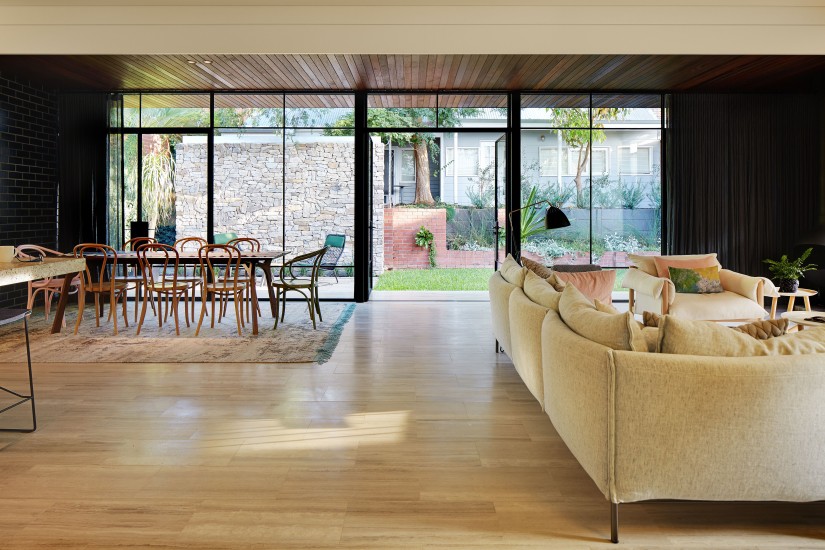
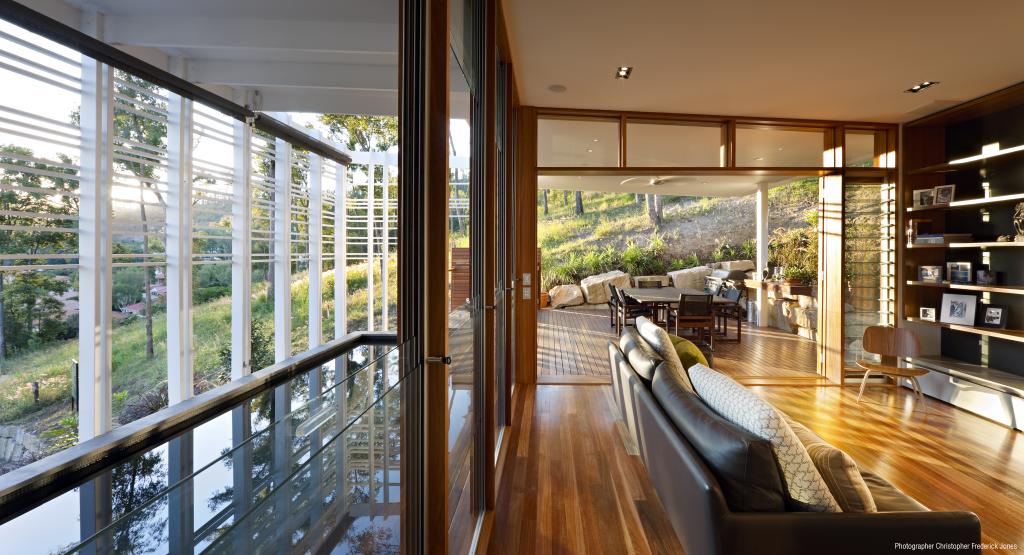
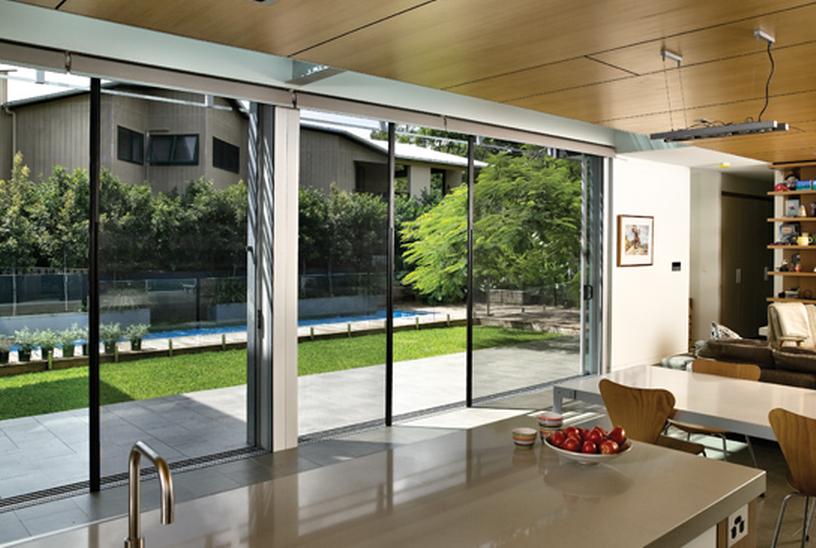
 With over 30 years industry experience, Amelia Lee founded Undercover Architect in 2014 as an award-winning online resource to help and teach you how to get it right when designing, building or renovating your home. You are the key to unlocking what’s possible for your home. Undercover Architect is your secret ally
With over 30 years industry experience, Amelia Lee founded Undercover Architect in 2014 as an award-winning online resource to help and teach you how to get it right when designing, building or renovating your home. You are the key to unlocking what’s possible for your home. Undercover Architect is your secret ally
Hi Amelia, fantastic article… I have been binge reading your entire blog! Thanks for sharing your expertise and experience, it’s a great resource
My 2 cents is UPVC and thermally broken aluminium windows. They are probably not necessary in Queensland but seem to be gaining popularity in cooler climates. We are using them in a new build in Canberra (actually sourced from QLD!).
Hi Jane
Thanks for your comment and your feedback on the UA blog – I’m so glad you’ve found it useful.
Yes – I designed a new home for a client in the Adelaide Hills, and they were planning on using UPVC double glazed windows. They can provide enormous benefits in helping homes retain heat in Winter. The advice I received from the manufacturer was to look at the orientations you’re using it on, and prioritise whether you’ll be keeping heat in, or heat out – because that can impact the way you arrange the panes of glazing.
Best wishes for your new build!
– Amelia, UA x
Hi Amelia,
Have been following your articles with great appreciation ,
Can you please help me regarding Windows – I need to reppace over 50% of wood windows in home I just purchased as they are filled with woodrott- can you advise me which is the cheapest way – ie do I use a carpenter or a builder etc as I am feeling very overwhelmed right now and really don’t have anyone who can help me – yes singke femake who doesn’t want to be ripped off.
Kind regards
Rose
Hi Rose,
I’m glad you’ve been finding UA helpful.
It is difficult to advise without knowing your location, your house type, the existing conditions of your windows, and the extent of building work required to remove and install new types. I would suggest actually contacting a window manufacturer local to you. Companies like Trend Windows, or GJames (for alumimium) or a local timber framed window company, may be able to make the best suggestions for you – and recommend preferred tradespeople local to you.
Hope that helps
– Amelia, UA
That sounds like sound advice. I don’t think we paid enough attention to the type of glazing, besides them being double glazed, so we may have compromised the performance a bit. Adelaide Hills seems like a beautiful area, lucky clients! Thanks for the best wishes and keep up the great work x
Thank you Jane!
Hi Amelia, Just wondering if you have any advice on Skylights? I am particularly interested if you have any thoughts on their effectiveness to provide ambient light if in shadow for a significant part of the day? BTW, love your Blog!! Cheers, Rebecca
Hi Rebecca,
Thanks for your kind comments about the UA blog, and your question.
I love skylights for a few reasons.
– Firstly is that they expand the sense of volume in a space by creating a visual connection with the sky.
– Secondly, is that they create an opportunity to get natural light into your interiors that may not be possible with windows and doors.
– Thirdly, they can also be great for ventilating hot spaces when you use the operable ones
– Lastly, you can have fun with the design of the shaft to create a sense of drama and light to really maximise the skyligh
Sometimes the best skylight orientation is south-facing (for the southern hemisphere) where you’re not getting direct shafts of sunlight, and a more even, low glare option, with constant daylight ambient levels. I would expect that a skylight in shadow would operate similarly. Don’t underestimate what seeing the sky will do for a space, beyond the light you’ll receive.
I’d recommend you consider (based on where you live) what might happen when it does get direct light. Will it load your space up with heat, and so should you choose a skylight with double glazing, or a built in blind, or with performance glass. The same might be true for heat loss – glass is a terrible thermal insulator in keeping interiors warm, but it can be improved with double glazing etc.
Hope that helps (and Velux are my fave skylights)
– Amelia, UA x